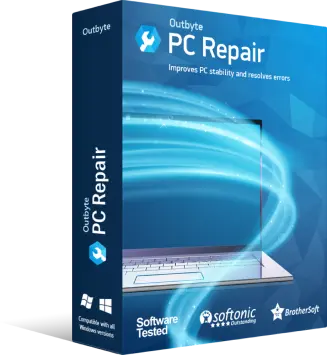Repair Utility
- File name: pc-repair-setup.exe
- Tool''s Developer: Outbyte
- Certified by: Symantec
- Download Size: 24 MB
- Downloaded: 1,143,473 times
-
Rating:

 Start Download
Start Download
Windows Operating Systems



Unlock Lightning Speed: Mastering USB 3.0 for Ultra-Fast Data Transfer
In today’s fast-paced digital world, transferring large files quickly is no longer a luxury—it’s a necessity. USB 3.0, also known as SuperSpeed USB, promises blazing-fast data transfer speeds of up to 5 Gbps, a significant leap from USB 2.0’s 480 Mbps. Yet, many users find themselves stuck with sluggish performance, wondering why their devices aren’t living up to the hype. The truth is, unlocking the full potential of USB 3.0 requires more than just plugging in a cable. Let’s explore the common pitfalls holding back your transfer speeds and how to fix them.
1. The Root Causes: Why Your USB 3.0 Isn’t Delivering Lightning Speed Incorrect Port or Cable UsageUSB 3.0 ports are typically marked with blue inserts or the “SS” (SuperSpeed) logo. If you’re plugging your device into an older USB 2.0 port (often black or white), you’ll be limited to slower speeds. Similarly, using a USB 2.0 cable—even with a USB 3.0 port—caps performance. These cables lack the additional wires needed for SuperSpeed transfers.
Outdated or Missing DriversYour operating system relies on drivers to communicate with hardware. If USB 3.0 drivers are outdated, missing, or corrupted, your system might default to USB 2.0 speeds. This is common after OS updates or when using older motherboards.
Device Compatibility IssuesNot all devices support USB 3.0. External hard drives, flash drives, or peripherals designed for USB 2.0 won’t magically gain speed when plugged into a SuperSpeed port. Always check for the USB 3.0 logo on your device.
Background Processes and File System LimitationsBackground apps consuming bandwidth (e.g., cloud sync tools, antivirus scans) can throttle transfer rates. Additionally, fragmented files on older mechanical hard drives (HDDs) slow down read/write operations. While modern solid-state drives (SSDs) aren’t affected by fragmentation, HDDs still suffer.
Power Management SettingsTo save energy, Windows and other OSes may throttle USB ports. This feature, while useful for laptops, can inadvertently limit performance during active transfers.
2. Step-by-Step Guide to Fix USB 3.0 Speed Issues Step 1: Verify Hardware Compatibility- Check the Port: Ensure your device is connected to a blue USB 3.0 port or one labeled “SS.” Consult your computer’s manual if unsure.
- Use the Right Cable: Look for cables marked “USB 3.0” or “SuperSpeed.” USB 3.0 cables have nine pins (visible as a second row of contacts) compared to USB 2.0’s four.
On Windows:
- Press Win + X and select Device Manager.
- Expand Universal Serial Bus controllers.
- Right-click entries labeled “USB 3.0” or “eXtensible Host Controller” and select Update driver.
- Choose “Search automatically for drivers” and follow prompts.
If issues persist, visit your motherboard or laptop manufacturer’s website to download the latest drivers manually.
Step 3: Optimize System Settings- Disable Power Throttling:
- In Device Manager, right-click each USB Root Hub under Universal Serial Bus controllers.
- Select Properties > Power Management.
- Uncheck Allow the computer to turn off this device to save power.
- Defragment Your Drive (HDDs Only):
- Search for “Defragment and Optimize Drives” in Windows.
- Select your HDD and click Optimize.
Before transferring files, close unnecessary programs like Dropbox, OneDrive, or torrent clients. Temporarily disable real-time antivirus scans if safe.
Step 5: Test and Validate SpeedsUse tools like CrystalDiskMark or USBDeview to benchmark transfer rates. If speeds remain low, try another USB 3.0 device to isolate the issue.
3. Conclusion: Embrace the Speed You DeserveUSB 3.0 is a game-changer for data transfer, but its performance hinges on proper setup. By ensuring hardware compatibility, updating drivers, and tweaking system settings, you can eliminate bottlenecks and achieve the ultra-fast speeds promised by SuperSpeed USB. Remember, the right cable and port are non-negotiable—never settle for guesswork. Regularly maintain your system by defragmenting HDDs and monitoring background processes, and you’ll turn tedious file transfers into a seamless experience. Don’t let outdated habits or overlooked settings hold you back. With these fixes, your USB 3.0 devices will finally operate at full throttle, saving you time and frustration. Unlock that lightning speed—it’s been there all along, waiting for you to take control.
|
The 802.11n USB Wireless Driver enables seamless connectivity for USB devices to 802.11n Wi-Fi networks, supporting faster speeds, extended range, and improved stability. Ideal for upgrading older hardware, it ensures reliable wireless performance for browsing, streaming, and file transfers. Easy to install and compatible with most operating systems.
|
|
Struggling to connect Bluetooth devices to your notebook? Explore common fixes for driver issues, compatibility problems, and settings adjustments to restore seamless wireless connectivity quickly.
|
|
Download Windows 10 drivers to ensure your hardware components function smoothly with the latest updates. Find official drivers for your device model via the manufacturer’s website, Windows Update, or trusted platforms. Always verify compatibility with your OS version and avoid third-party sources to minimize security risks.
|
|
Download the latest Epson L3150 printer driver to ensure seamless connectivity and optimal performance for your Epson EcoTank L3150 all-in-one printer. This driver supports Windows and macOS, enabling hassle-free printing, scanning, and copying with enhanced features for home or office use.
|
|
**Samsung Drive: High-Speed Storage Redefined** Samsung Drive introduces a breakthrough in data management, blending lightning-fast transfer speeds with cutting-edge NVMe technology. Designed for professionals and power users, it delivers unmatched performance for seamless multitasking, large-file handling, and resource-heavy applications. Built with durability and energy efficiency, this storage solution redefines reliability while maintaining sleek, compact portability. Elevate productivity—experience storage that keeps pace with ambition.
|
|
Connect your Epson L3250 printer to a wireless network effortlessly with these steps: Install the Epson Smart Panel app, power on the printer, and follow on-screen instructions to select your Wi-Fi network. Ensure your device and printer share the same network, then print a test page to confirm setup. Enjoy seamless wireless printing!
|
|
Download the latest Canon PIXMA G3110 driver for Windows 10 to ensure seamless printer connectivity and optimal performance. This guide provides step-by-step instructions for hassle-free installation, troubleshooting tips, and access to official driver updates directly from Canon’s support site. Perfect your printing experience with compatible software tailored for Windows 10.
|
|
Download the latest Epson L3250 printer driver for seamless setup and enhanced performance. Ensure compatibility with Windows, macOS, and other systems while accessing essential printing features. Quick installation, reliable connectivity, and optimal functionality—get your L3250 driver now.
|
|
The 802.11 Wireless Drive Adapter transforms any external hard drive into a wireless storage solution, enabling seamless Wi-Fi connectivity for file access, streaming, or backups across devices. Compatible with 802.11 standards, it eliminates the need for direct cables, offering flexible, network-integrated storage for homes or small offices.
|
|
**Step-by-Step Guide to Setting Up Epson L3250 WiFi** 1. **Unbox & Power On**: Remove packaging, plug in the printer, and turn it on. 2. **Install Ink**: Insert cartridges and wait for initialization. 3. **Connect to WiFi**: Press the printer’s WiFi button, then connect your device to its network via settings. 4. **Install Software**: Download Epson Smart Panel from the official website and follow on-screen instructions. 5. **Link to Network**: Select your WiFi name, enter the password, and confirm connection. 6. **Test**: Print a test page or use the Epson app for wireless scanning/printing. Troubleshoot
|
| See all queries |



